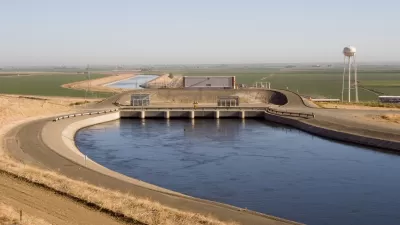As climate change affects the habitats and migratory patterns of protected species, many are calling for protected areas to shift along with the animals they're intended to safeguard.
"Changing weather patterns have shifted upwelling currents, the productive areas that support large anchovy schools, northward. On average, Punta Tombo penguins must now swim 25 miles farther for a meal – 50 miles total – compared with a decade ago. Some penguins have simply established new colonies closer to their food source, welcome evidence of their ability to adapt."
"But the move also worries Boersma: At Punta Tombo, the penguins are protected. In their new colonies farther north, on private land, they're not."
"The aquatic birds' exodus from a safe haven highlights a quandary presented by a changing world: How do people, with their landlubber bias, protect and manage marine ecosystems that, by definition, go with the flow?"
"So far, few – and maybe none – of the more than 4,500 marine protected areas (MPAs) established worldwide have been explicitly designed to cope with climate change and the issues exemplified by the Magellanic penguins, say experts. Getting protected areas drawn on a map is hard enough, they note. Establishing one that moves or adjusts with changing conditions – a roving MPA – will be harder still."
FULL STORY: Parks that can move when the animals do

Alabama: Trump Terminates Settlements for Black Communities Harmed By Raw Sewage
Trump deemed the landmark civil rights agreement “illegal DEI and environmental justice policy.”

Study: Maui’s Plan to Convert Vacation Rentals to Long-Term Housing Could Cause Nearly $1 Billion Economic Loss
The plan would reduce visitor accommodation by 25% resulting in 1,900 jobs lost.

Planetizen Federal Action Tracker
A weekly monitor of how Trump’s orders and actions are impacting planners and planning in America.

Waymo Gets Permission to Map SF’s Market Street
If allowed to operate on the traffic-restricted street, Waymo’s autonomous taxis would have a leg up over ride-hailing competitors — and counter the city’s efforts to grow bike and pedestrian on the thoroughfare.

Parklet Symposium Highlights the Success of Shared Spaces
Parklets got a boost during the Covid-19 pandemic, when the concept was translated to outdoor dining programs that offered restaurants a lifeline during the shutdown.

Federal Homelessness Agency Places Entire Staff on Leave
The U.S. Interagency Council on Homelessness is the only federal agency dedicated to preventing and ending homelessness.
Urban Design for Planners 1: Software Tools
This six-course series explores essential urban design concepts using open source software and equips planners with the tools they need to participate fully in the urban design process.
Planning for Universal Design
Learn the tools for implementing Universal Design in planning regulations.
Caltrans
Smith Gee Studio
Institute for Housing and Urban Development Studies (IHS)
City of Grandview
Harvard GSD Executive Education
Toledo-Lucas County Plan Commissions
Salt Lake City
NYU Wagner Graduate School of Public Service





























